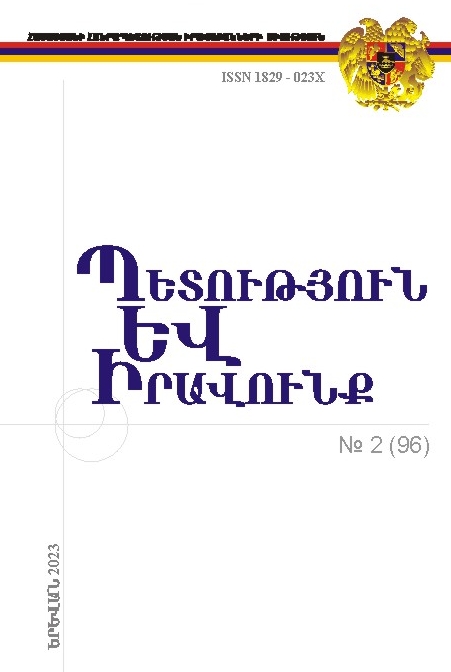ANALYSIS OF THE CERTAINTY OF LAW IN THE CONTEXT OF SET THEORY
DOI:
https://doi.org/10.46991/S&L/2023.96.062Keywords:
certainty of law, formula for the certainty of law, set theory, components of the certainty of law, accessibility of legislation and court decisions, foreseeability, stability and consistency of law, legitimate expectations, non-retroactivity, res judicataAbstract
In the framework of this scientific article, the author considers the certainty of law in the context of the unity of its components: accessibility of legislation and court decisions, foreseeability, stability and consistency of law, legitimate expectations, non-retroactivity, res judicata. Moreover, the author analyzed and presented this unity through set theory, because of which the author received the “formula for the certainty of law”.
The author concluded that the general area obtained as a result of solving the above components and their intersection is the certainty of law, due to its proper implementation, the presence of a specific mechanism for drafting normative legal acts, as well as the exclusion of the occurrence of uncertain situations in legal practice are provided.
In the work, the author paid special attention to the study of the legal certainty formula, applying the synergistic approach, because of which the author concluded that such a combination of the components of the certainty of law does not have a purely technical, mechanical nature, i.e., these components are not combined through such mathematical, arithmetical operations because "it is necessary". In other words, such a combination has an important goal, that is, ensuring a qualitative result - the effectiveness of law-making and law-enforcement activities.
Downloads
Published
Issue
Section
License
Copyright (c) 2023 State and Law

This work is licensed under a Creative Commons Attribution-NonCommercial 4.0 International License.

